What is product placement? How does product placement work? Why should my brand work with a product placement agency instead of working with the production company? We’ll guide you through these questions and provide tips on how to get started.
Product placement, also known as brand integration or product integration, is an entertainment marketing strategy in which brands are incorporated within films, television shows, music videos, or other entertainment content in order to reach consumers.
Branded integrations have become one of the most effective forms of marketing, which is why so many brands are looking for a product placement agency to cut through the advertising clutter. Ad avoidance is at all time highs with over 41% of viewers habitually skipping or avoiding television advertisements, according to a 2017 Deloitte Study. Ad supported television is under threat with 25% of all households expected to cut the cord by 2022 (eMarketer). In addition, viewers prefer integrations over ads. A BENlabs Ipsos poll revealed that 73% of viewers stated that they found integrations less intrusive than ads. The combination of ad avoidance and ad annoyance has made product placement a critical staple in the marketing toolkit, and it might be just the marketing element to establish your brand relevance.
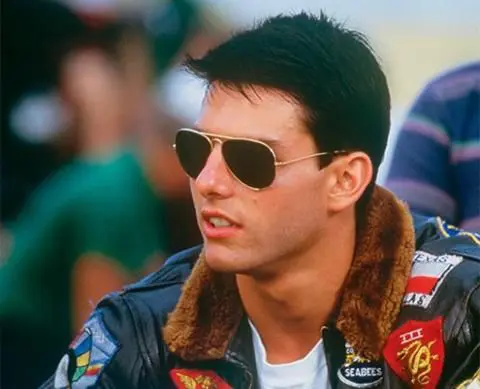
There is an art to placing brands in new movies and shows. Product placement only works if brands are incorporated authentically into the story, empowering the storyline and not disrupting it. You want your product (or service) shown in the best light in recognizable scenes. To do this, brands like yours work with a product placement agency to align with different story elements. You can align with distinct characters such as Ray-Bans on Tom Cruise in Top Gun or the Chevy Camaro as Bumblebee in Transformers. Brands cal also can operate as physical sets or locations such as the Gap in Stranger Things or Dunkin’ Donuts in Patriots Day. Most commonly they act as natural props like Xbox in Big Bang Theory or Reeses Pieces in ET that bring the world to life. Imagine establishing your brand as a culturally relevant icon that viewers can’t miss.
Product placement originated in radio in the early 1900s. Full length radio SOAP operas such as Painted Dreams or Clara, Lu, and Em were sponsored by, you guessed it, soap companies. These early stories told women centric stories and were the dominant medium up until the dawn of television in the 1940s.
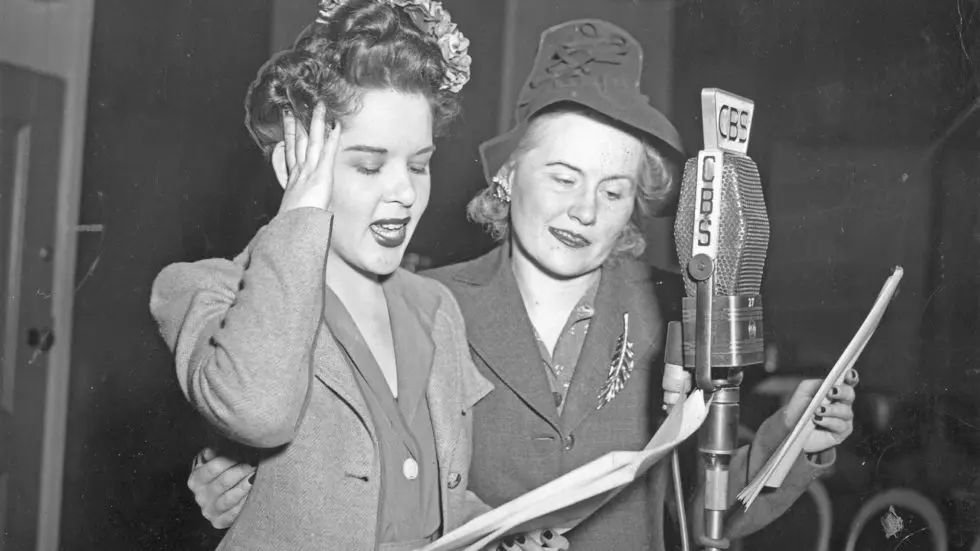
With the rise of film and television in the 50s, product placement expanded, with advertisers often sponsoring entire programs similar to the early SOAPs. Shows like Camel Caravan and Kraft Television Theater were wholly sponsored by brands. With networks limited to NBC, ABC and CBS, these deals were negotiated between the major broadcast networks and their advertising sponsors.
In the late 1970s and early 1980s, product placement agencies began to appear as the industry matured. They worked on behalf of brand clients by integrating their products and services into feature films and television shows. One of the pioneering agencies in product placement was Norm Marshall & Associates (NMA), founded in 1979 by Norm Marshall. NMA later became BEN when it was sold to Bill Gates’ Corbis in 2012. During its lifetime, NMA executed some of the most iconic placements ever, including Dr. Pepper in Forrest Gump, BMW in James Bond, American Airlines in Home Alone and BabyBjörn in The Hangover.
Today product placement is a multi-billion dollar industry, connecting thousands of brands to consumers through streaming, music video, films, broadcast and influencer content.
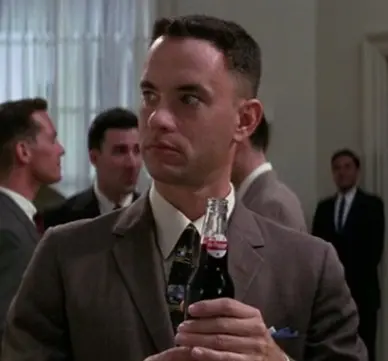
Getting inside pre-existing programming – rather than interrupting it – has some important benefits: higher engagement rates, no skipping or ad-blocking, no production costs, built in distribution, impressions that continue to build for the lifetime of the program, and the ability to grow brand perception through contextual and character alignments. At BENlabs, we offer a variety of Product Placement services to fit your brand marketing needs.
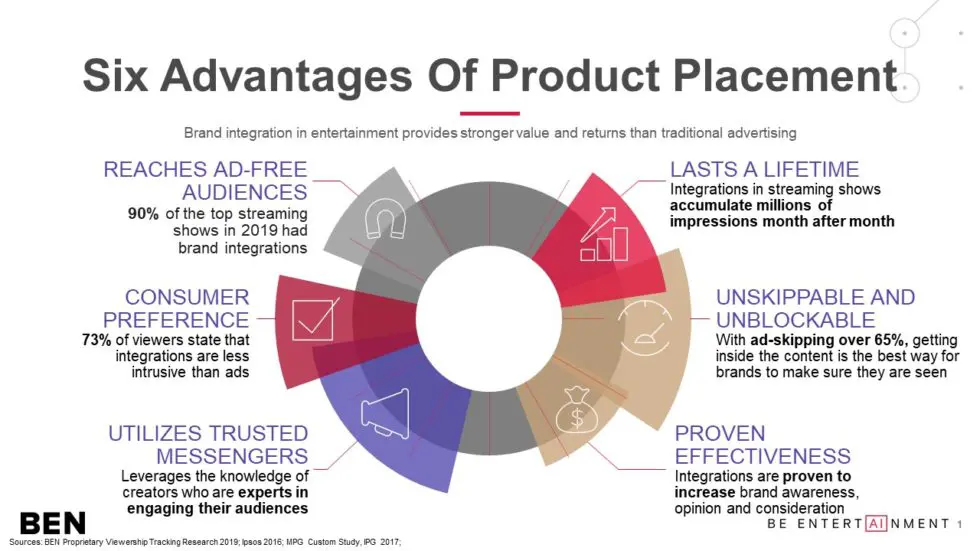

Work with a Product Placement Agency that puts your brand Interest First. Sometimes the most simple placements results in the most amazing on-screen moments. The Big Bang Theory, centered around a cast of loveable nerds who live and play together, offered the perfect opportunity to create natural moments around the brand. Through their extensive relationship with the production, BENlabs (formerly BEN Product Placement) was able to secure massive exposure across multiple episodes including a critical storyline integration that had the lead character showing preference for the brand over their top competitor. The product placement paid massive dividends, creating affinity, credibility and cultural relevancy for the brand in TV’s highest rated sitcom.
Prison doesn’t seem like the ideal environment for a brand. Brand safety alarm bells go off just thinking about it. However, BEN’s relationships with the show’s creators and a review of the scripts revealed multiple opportunities where brands could play a role. What better way to bribe prisoners than a delicious treat they couldn’t get on the inside? What coffee do prison guards drink on their break? The trust built with show creators developed many memorable placements throughout multiple seasons of one of streaming’s biggest shows.
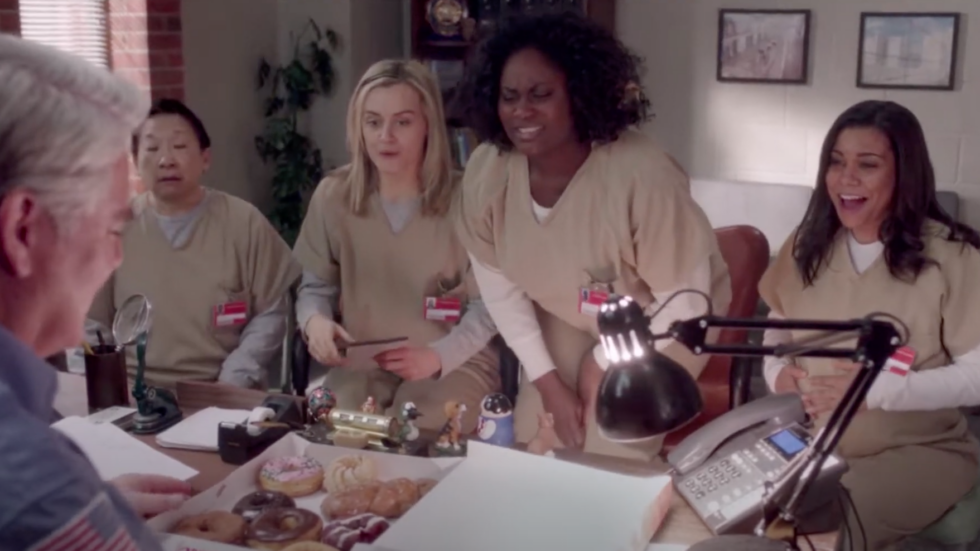
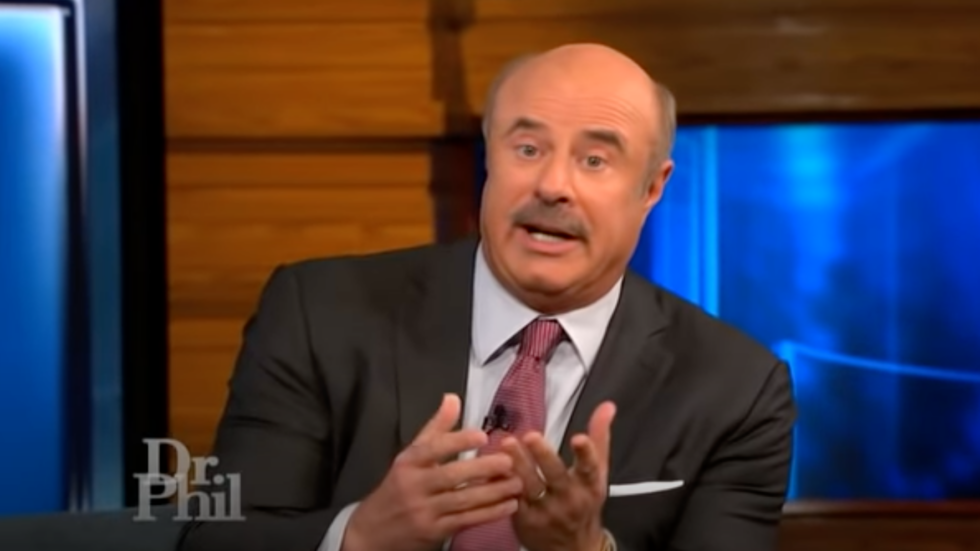
Knowing where and what your audience is watching is crucial. In yet another BEN Product Placement, BOOTS No7 launched their new anti-aging serum via daytime talk. Daytime talks shows provided BOOTS with a forum to explain the benefits of their serum — a crucial opportunity for a new, breakthrough product. Most importantly, their brand fit perfectly into each segment as daytime over-indexed with their target consumer.
Product placement offers creators of all levels additional dollars and products to help their productions bring the best entertainment to the screen. Beyond the monetary benefits though, product placement is an essential part of developing believable worlds that audiences love. What we hear most from the production community is that brands lend a sense of reality to a story. Whether they are a prop master, set designer, transportation coordinator or a producer, productions prefer to ground their worlds with objects and settings familiar to audiences. Don’t believe us? Check out our Product Placement case studies.
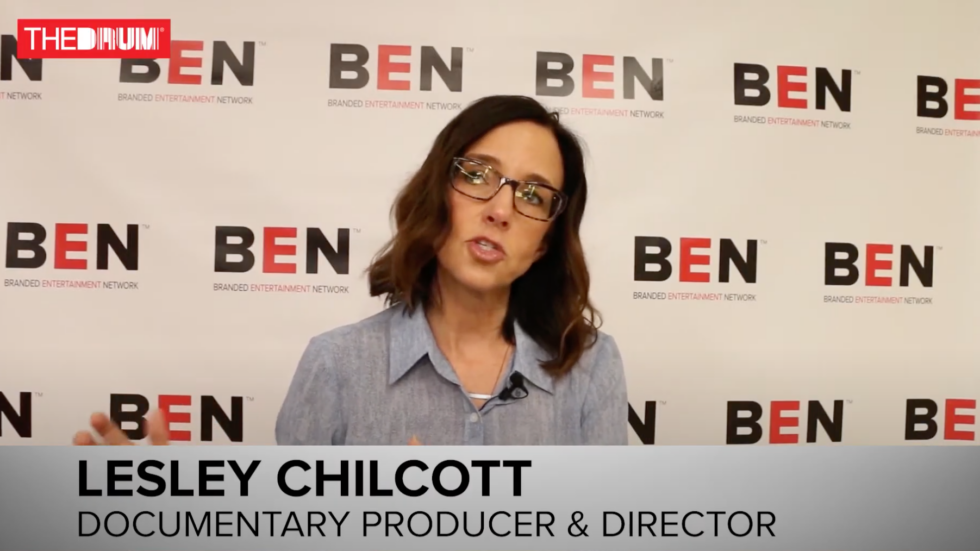
The sheer volume of content has made it nearly impossible for humans to interpret and scan all product placement opportunities. The average American is streaming 8 hours of content daily with total content spend across networks surpassing $121 billion according to Variety.
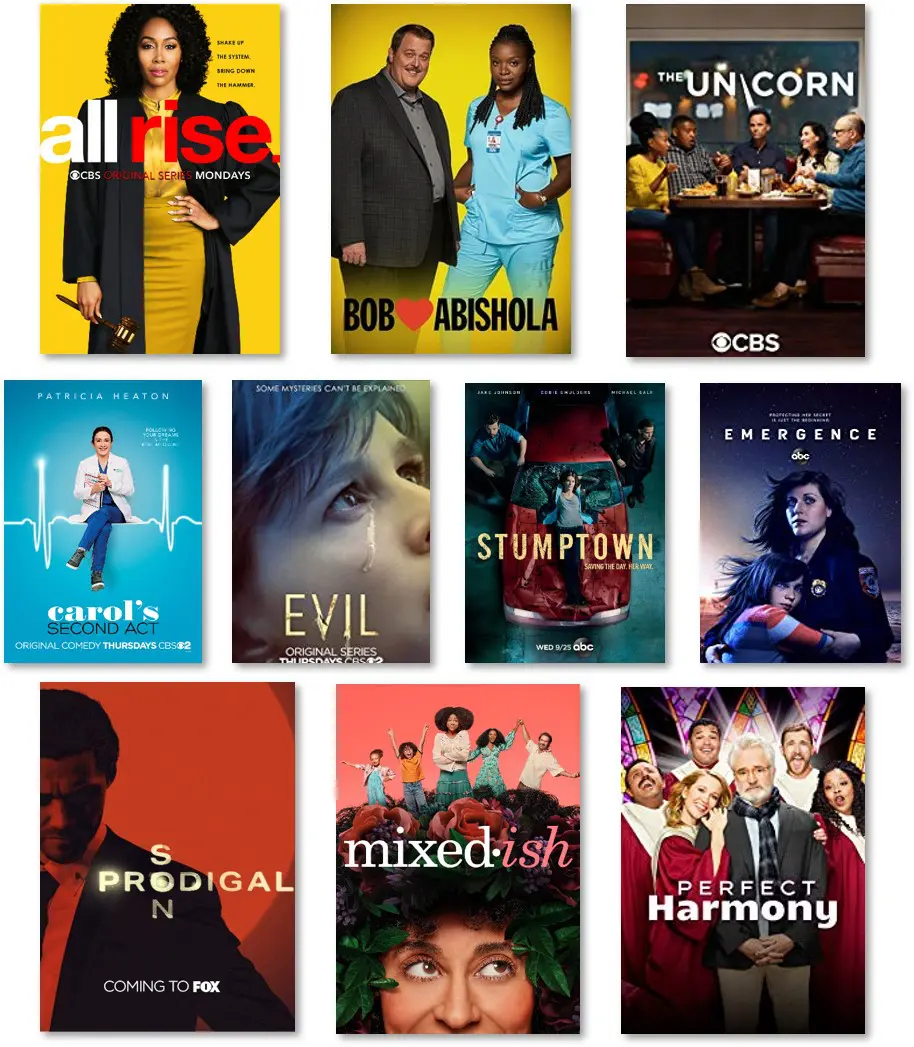
As ad-avoidance increases, so does the demand for artificial intelligence and the insights it can provide. When you work with BENlabs, you’ll access our expanded service which have grown to leverage the power of AI. Our AI analyzes brand sentiment, influences partnerships, predicts success of new shows, and will ultimately transform the industry! It’s important to know exactly which challenges AI solves when it comes to product placement.
Brands rely on their placements to perform and reach audiences, but entertainment viewership, especially new programs, is notoriously hard to predict. AI has become a primary method for BEN to understand which pieces of content will bring viewership, and which entertainment opportunities are the best for our brand partners. For example: In our most recent 2019 test, BEN’s AI predicted 5 out of 5 of the top performing broadcast shows. That’s compared to 3 of 7 for ADWEEK and 1 of 5 for TV Guide.
Scanning and filtering opportunities for thousands of hours of entertainment content each year is a time consuming process. By combining AI and human expertise, technology can narrow the field to promising opportunities that our in-house experts review for fit. This increases productivity and provides product placement on a massive global scale.
Product placement remains a key tool for producers everywhere to fund their creations and build realistic worlds for audiences. From its humble beginnings funding soap operas in the 1930s, to the billion dollar industry it is today, product placement has fast become one of the most important ways for marketers to effectively reach audiences today.
The cultural relevance and cache that brands like yours receive from product placement remains the biggest driver for the industry. The emergence of ad-blocking technology and consumer ad avoidance has ensured product placement will continue to grow as an essential tool for the modern marketer. Those industry trends are rapidly progressing as new, transformative AI technology creates improvements to filter, identify and surface opportunities for brands. All of these corresponding factors point to product placement only growing in the near and far future.
Provide your contact information to connect with sales.
Already have an account? Contact us through our Help Center.
Provide your contact information and we’ll be in touch within 24 hours.
Provide your contact information and we’ll be in touch within 24 hours.
Provide your contact information and we’ll be in touch within 24 hours.
Provide your contact information and we’ll be in touch within 24 hours.
Provide your contact information and we’ll be in touch within 24 hours.